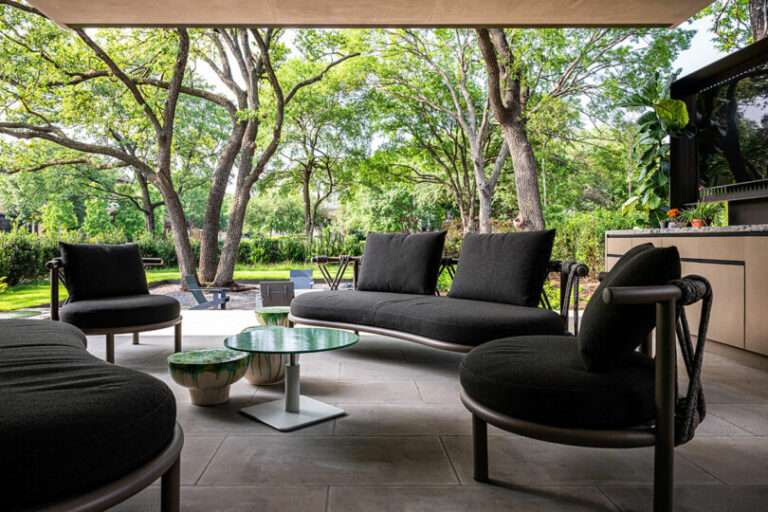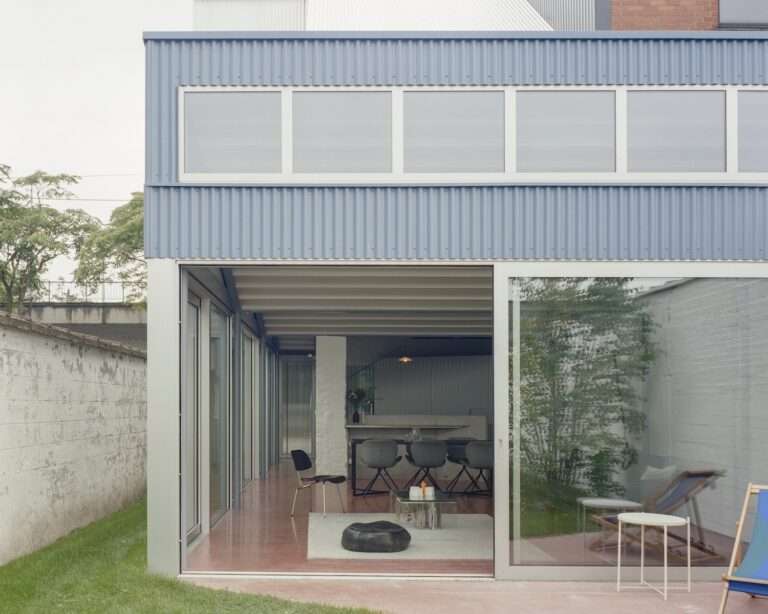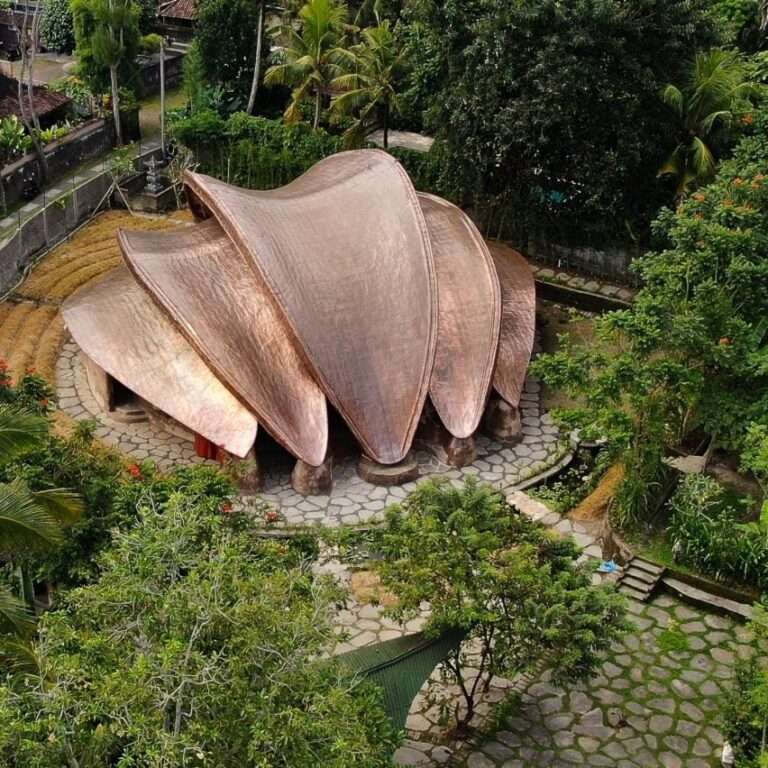Geometric shapes, fossilised stone and English cherry wood characterise this house in Wimbledon, London, overhauled by local architecture studio Gundry & Ducker.
Named Wimbledon Villa, the studio renovated and extended the detached early 2000s property with the aim of making it feel like “a country house in miniature”.
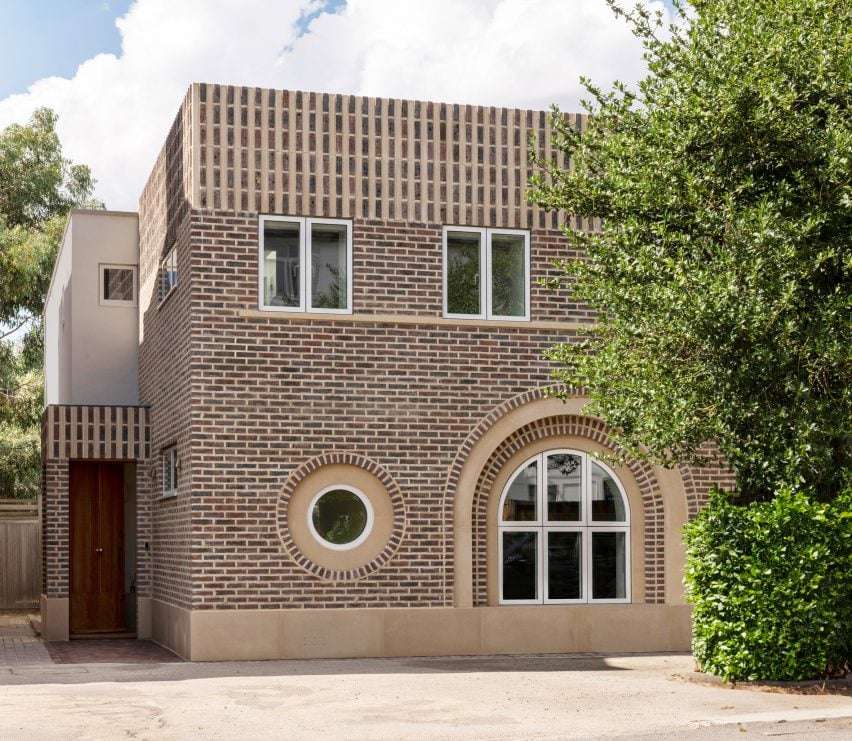
Studio co-founder Christian Ducker told Dezeen that “the existing house was of a very thin appearance and had little presence on the street”. To overcome this, Gundry & Ducker extended to the side and rear of the house, added a new entrance porch and constructed a brickwork facade at the front which combines “a mixture of symmetry and asymmetry.”
“This area around Wimbledon Common is home to the Edwardian Villa, and the new facade is designed to be a contemporary interpretation of this form whilst having a relationship with an adjacent listed building,” he explained.
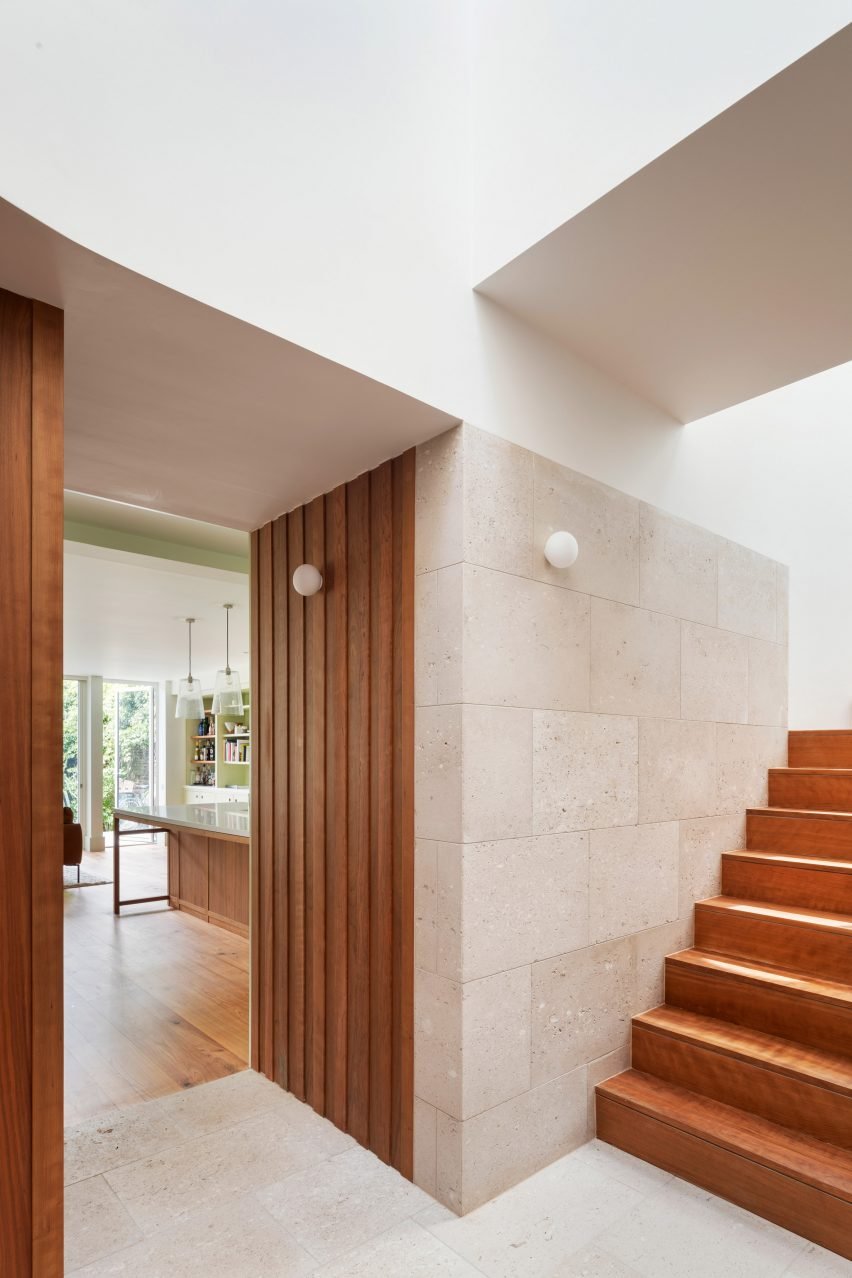
On the ground floor, the layout was adapted from one singular barn-like area into a combination of cellular and open-plan spaces.
“The house faces a busy road and communal parking area,” Ducker said. “So the main living spaces were previously affected by traffic and lack of privacy, and the centre of the house by lack of light,” he explained.
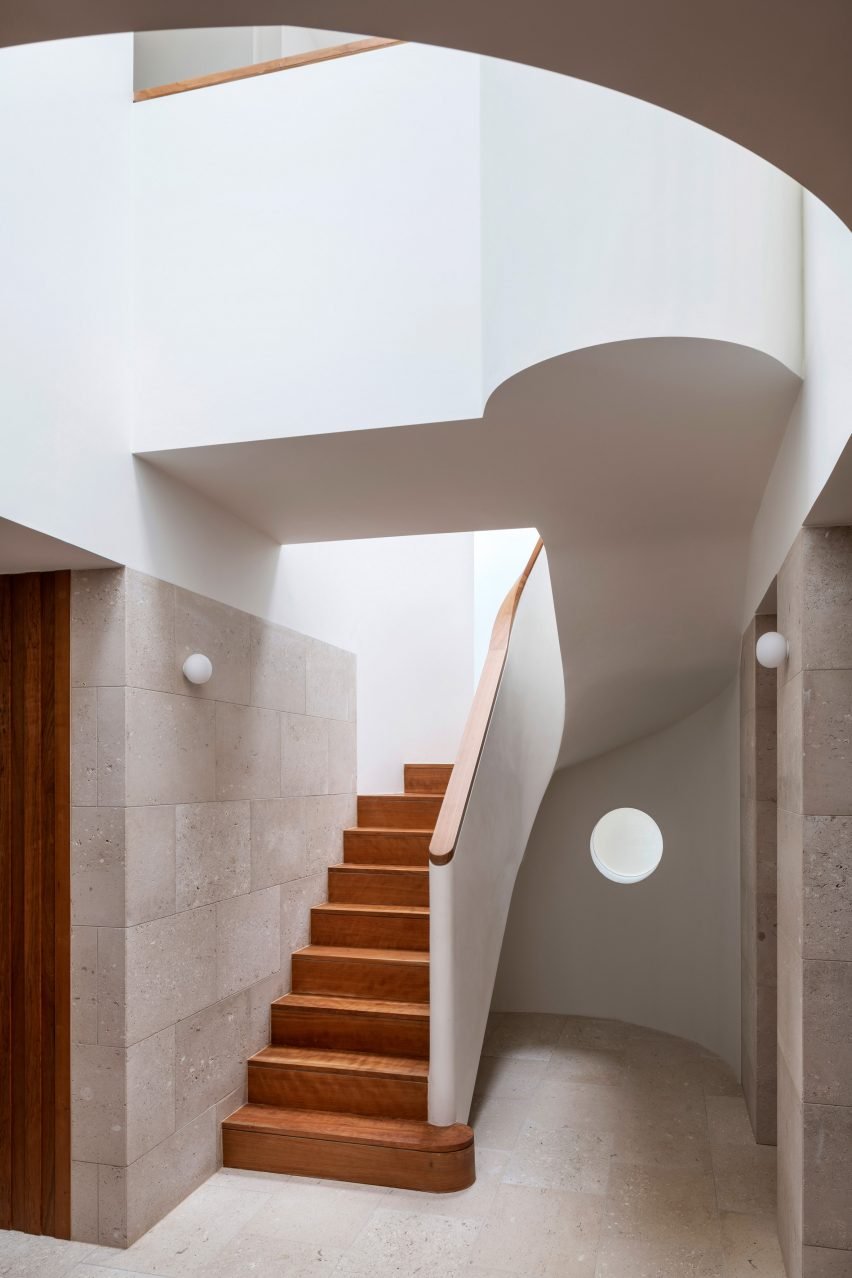
“The new interior layout is based on issues of orientation, daylight, sociability and privacy,” said Ducker.
“You now enter through a small porch which leads to a contrasting double-height space that sits at the centre of the house, with rooflights above,” he described.
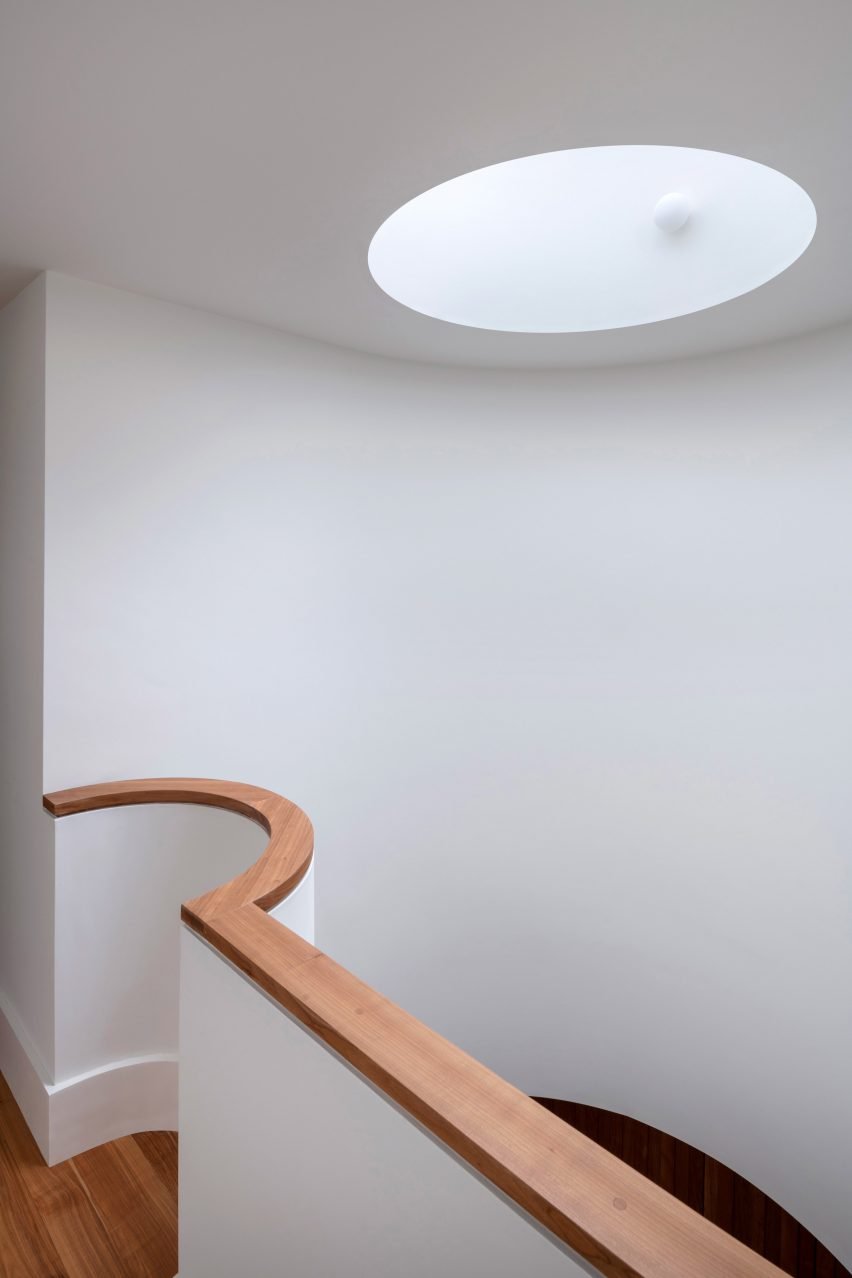
Pale stone and white painted walls contrast against the rich cherry wood staircase and matching bannister. The hallway branches off to functional spaces including a storage room, cloakroom and downstairs bathroom.
“The internal plan is based on the arts and crafts layout of a central double-height hallway from which rooms are oriented to the north or south according to their use – social to the south and private to the north,” Ducker explained.
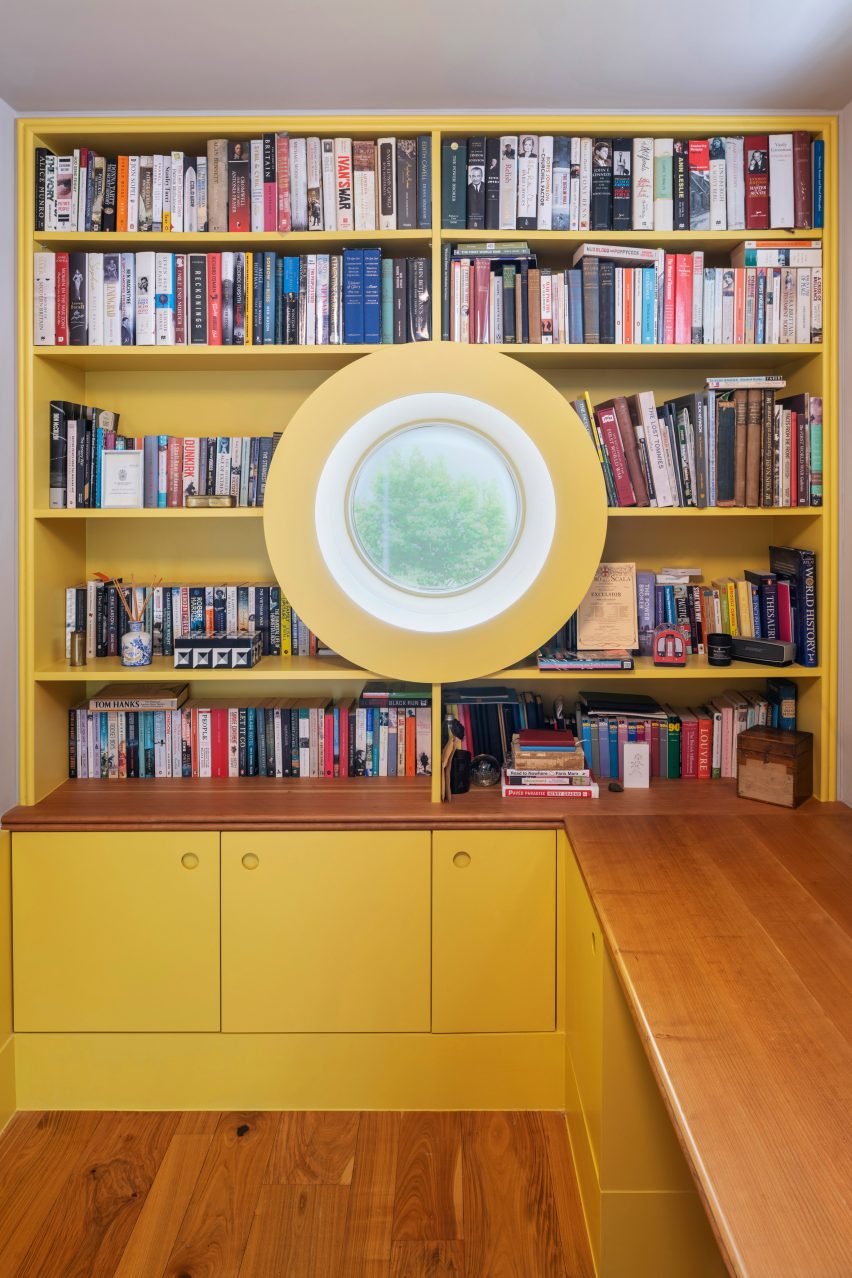
Painted in pastel yellow, the ground-floor “library” features a circular porthole window at the centre of the bookshelves.
A wooden surface runs along the adjacent wall to provide a workspace with inbuilt storage below.
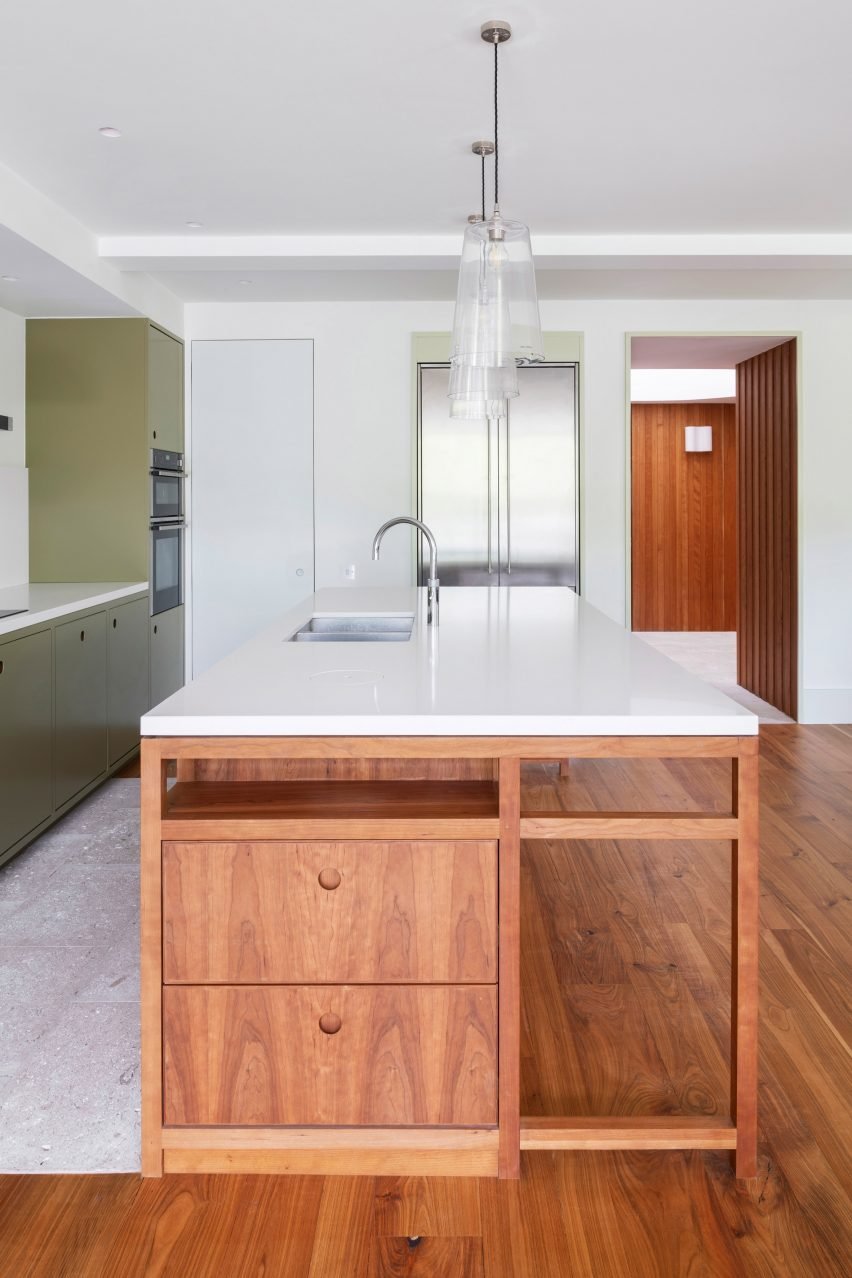
To the south, an open-plan kitchen, living and dining room has a material palette combination of English cherry wood and fossilised stone, which is continued from the hallway.
Kitchen cabinets were picked out in olive green against the white walls and worktops.
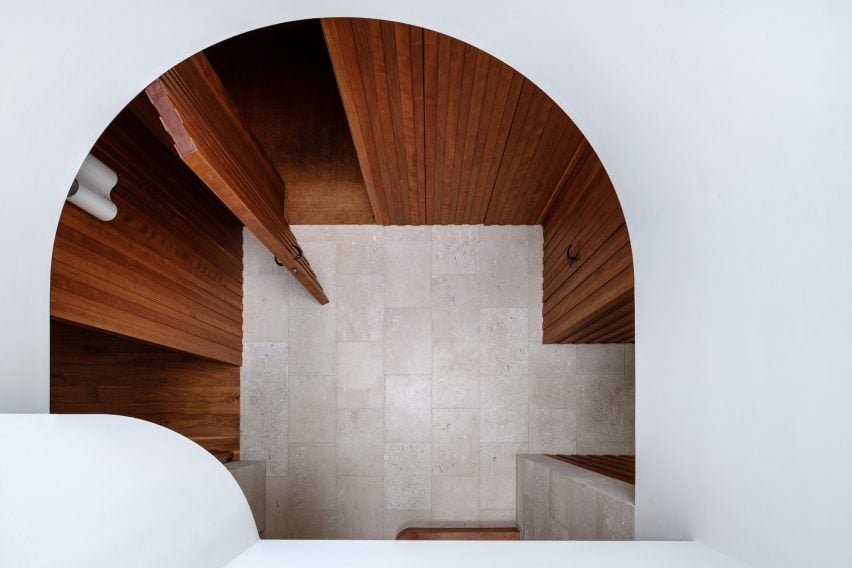
Geometric shapes are a repeated motif found throughout the property, including a semi-circular viewing balcony above the hallway and two circular skylights designed to allow natural light into the space.
The idea of a country house in miniature is manifested by “replicating elements of a much larger house into a 20-square-metre house,” Ducker explained.

 Gundry & Ducker revamps Victorian terrace to feature “different characters within a single house”
Gundry & Ducker revamps Victorian terrace to feature “different characters within a single house”
Upstairs, the balcony curves around to a “bridge” corridor, which runs perpendicular to the hallway.
This balcony connects a master bedroom with an en-suite and two dressing rooms on one side to an additional two bedrooms and two bathrooms on the other.
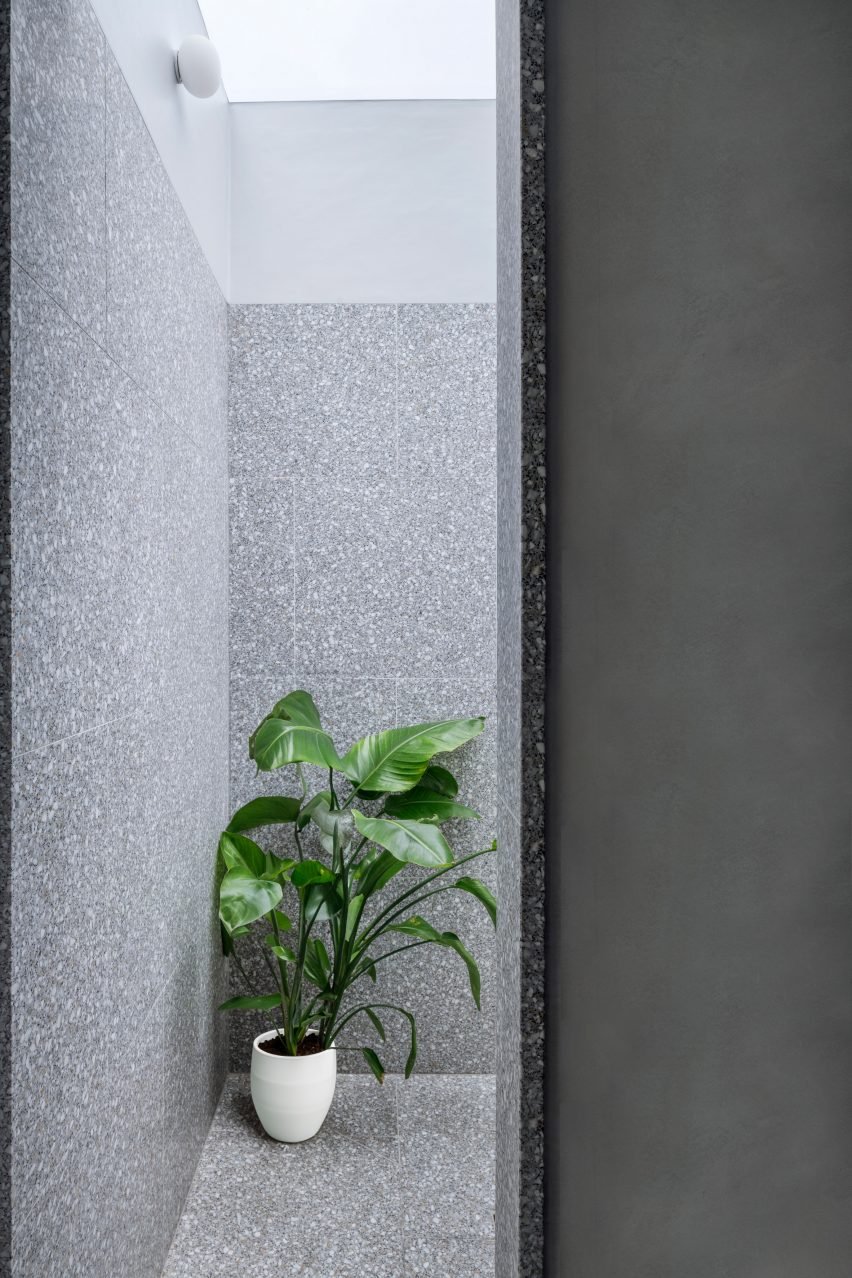
Gundry & Ducker was founded by Ducker and Tyeth Gundry in 2007. Other London projects by the studio include the Camden Town Brewery and a 1970s home featuring green hues and checkerboard terrazzo.
The photography is by Andrew Meredith.
Project credits:
Architect: Gundry & Ducker
Structural engineer: Feres
Contractor: Martins Builders
